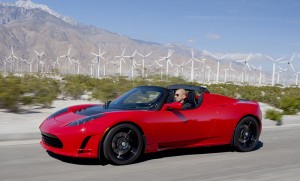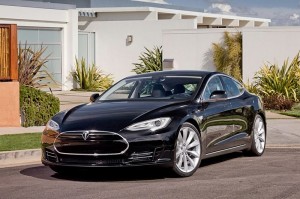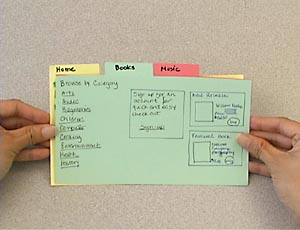Terrorism seems to be rampant in the western world – if you look at the media reports you might think that the chance of being the victim of a terror attack is a real and constantly present threat. But it isn’t. Terrorist attacks are incredibly rare events. According the the Global terrorism database there has been less than 3300 deaths from terror in the United States since 1970. 2764 of these were in the World Trade center on september 11. 2001. This is 43 deaths per year. Acording to NOAA 51 people die each year from lightning strikes. In other words, you are as likely to die from a terrorist attack as you are to die from a lightning strike. In fact you are more likely to die by falling in your bathtub, falling off a chair, being scolded by hot water from a tap, being stung by a hornet, being poisoned or falling off a building than you are dying in a terror attack. In other words – terror attacks are very rare, and are generally not a threat to normal people in Western countries.
Yet terror is perceived as an almost existential threat to our society. Why is that?
There are three reasons.
The first is psychological. We fear the unknown. This is why we are afraid of the dark and what might lurk in the deep water when we go swimming in the sea. We also fear situations where we don’t feel we are in control. This is why we feel safer in the drivers seat than in the passenger seat when we drive a little faster than we should, and it’s why some people are afraid of flying. Terrorism is unknown and we are not in control of where and when it might happen. That’s why it makes us afraid.
But that’s not enough to explain the massive fear of terrorism. Being stung by a hornet or being poisoned is as unknown and uncontrollable as terrorist attacks, yet we aren’t as afraid of being poisoned as we are of terrorist attacks. Which brings us to the second reason.
Mass media hypes and overexposes terror attacks. On the day of the recent Boston bombing, tragic as it was, there were more American fatalities from car accidents than terror attacks. But it’s spectacular and it’s a scary story that’s easy to write. People will read it. They see terror in every newspaper, every newscast and every radio show. They think it might happen to them. They think it happens much more often than it does because mass media inflates the story to crazy proportions. Then they will be afraid. And you can’t blame them, hardly a week goes by without some mention of terror in the news.
The third reason is that our leaders play by the terrorists rules. Terrorism is assymetric warfare. It’s using very limited means to engage an enemy that’s much bigger and which would instantly crush any terrorist organization in a head-to-head fight. It’s a flee biting an elephant. But presidents and prime ministers don’t treat it as the nuisance that it is. They treat it as a credible threat to national security, and something the general populace should be afraid of. This, of course, is exactly what a terrorist wants. The flee that bites the elephant is portrayed as a credible threat that we should all be very afraid of. Presidents and prime ministers step up to the podium with prepared speeches telling the people that this is a grave danger, but that we will throw every resource at the problem and eventually overcome the threat of terror. By doing so terrorists are put on a piedestal where they can get their twisted message across to more people than they would ever reach otherwise.
In the immediate aftermath of a terror attack it soothes a nation when its leaders step up to address the atrocity, and it unites a nation around an external threat. It also scores some cheap political points – approval ratings shoot up when the president or prime minister can tell the people after an attack that every effort will be made to get the perpetrators, no matter what it takes. Now on the hook a president or prime minister will allocate huge resources towards fighting terror attacks, most of it unnecessary security theater designed to make people feel safe, but not really helping. On the contrary the media now run stories about airport security, possible targets and how much money is being spent on keeping us safe from terrorists. But people don’t feel safe. They feel afraid.
This is a shortsighted strategy for several reasons.
First, it makes the enemy look bigger and scarier than it really is. The president only steps up to the podium when something truly big has happened. When we go to war. When natural disaster strikes. It puts the terrorist on a much bigger piedestal than he deserves.
Second, a disproportionate response makes normal people scared. When the president has left the podium the press takes over and before you know it everyone is talking about terrorism while looking over their shoulders. They are terrified. Which is the point of terror.
Third, it gives the terrorist and his organisation visibility, and can help recruit members. Al Qaeda grew significantly after the 9/11 attacks.
A true satesman should be able to see through this and deal with terror differently. Underplay it. Ridicule it. Not put terrorism on a piedestal, but paint terrorists as the low-life scums they are.
Norway did this in an exemplary way after the Breivik Shootings and bombing. The Norwegian prime minister got on the podium to soothe the people. But instead of fueling the fear and asking for retribution and revenge he told the Norwegian people that this was the work of a madman, and that it was an extremely rare event. People shouldn’t be worried, and shouldn’t be afraid. No never-ending war on terror. No security theater. A week later Norway was back to normal. Breivik was treated like any other criminal and was unceremoniously put behind bars for life like any other twisted mass murderer.
A true statesman will not put fuel on the bonfire of fear. He will extuingish it by telling us that there is nothing to be afraid of. That these acts are done by moronic twisted people that don’t deserve the attention. He will tell the people that they have nothing to fear but fear itself.




